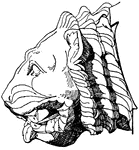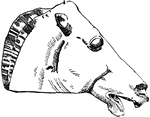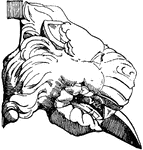
Gargoyle Lion Head
This Gargoyle Lion Head is made out of terracotta and is found in Athens, Greece.
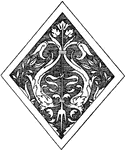
Dolphin Choir Seats
The Dolphin Choir Seats are found in Certosa near Pavia an ancient Italian town. It was designed during…
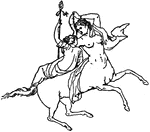
Centuars and Bacchantes
The Centaurs and Bacchantes comes from mural paintings found in ancient Pompeii, Rome. It is imaginary…
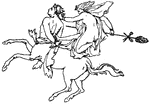
Multiple Centuars and Bacchantes
The two Centaurs and Bacchantes comes from mural paintings found in ancient Pompeii, Rome. It is imaginary…

Leaf Enrichment Moulding
The leaf enrichment moulding is a design found in Erechtheum, Athens an ancient Greek Temple.
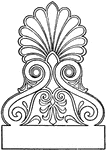
Greek Akroter
The Greek akroter serves as an ornamental finish to the apex of a gable. It is painted in the temple…
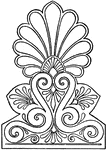
Greek Akroter
This Greek akroter is painted in Acropolis, Athens. It serves as the ornamental finish to the apex of…
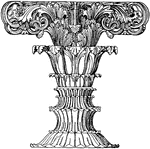
Finial Foliated Shaft
The finial foliated shaft is a Greek design of the choragic monument of Lysikrates in Athens.
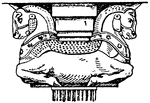
Ancient Persian Capital
The Ancient Persian capital is a design of the fore-parts of bulls. It is an Old Persian style that…

Ionic Capital
The ionic capital is a design of a scroll rolled on both sides with spiral curves. It is found in Bassae,…

Ionic Capital
The ionic capital is a design of a scroll rolled on both sides with spiral curves. It was found in Pompeii.
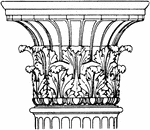
Antique Corinthian Capital
The antique Corinthian capital is a found in Melos, Greece. It is a design of a two rows of leaves that…
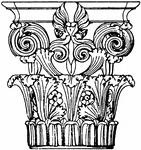
Greek Corinthian Capital
The Greek Corinthian capital is found in a monument in Lysikrates, Athens. It is a design of spiral…
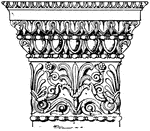
Greek Doric Pilaster Capital
The Greek Doric pilaster capital is found in the ancient Greek temple of Erechtheum in Athens. It has…
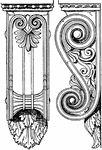
Greek Console
The Greek console is shown in the front and side view. It is found as a support to the North door of…
Greek Caryatid
The Greek Caryatid is a female figure used as a support in place of a column. It is found in the temple…
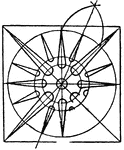
Greek Square Panel
The Greek square panel is found on the coffer of the Propylaea ceiling, the entrance to the Acropolis…
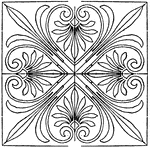
Greek Square Panel
The Greek square panel is found on the coffer of the Propylaea ceiling, the entrance to the Acropolis…

Greek Square Panel
The Greek square panel is found on the coffer of the Propylaea ceiling, the entrance to the Acropolis…
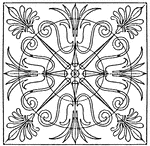
Greek Square Panel
The Greek square panel is found in Athens. This panel is divided into eight equal spaces that are decorated…
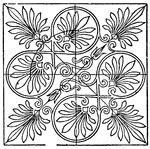
Greek Square Panel
The Greek square panel is found on the coffer of the Parhtenon ceiling, a Greek Temple. This panel is…

Greek Earring
This Greek earring is made out of gold in the form of a siren (Greek mythical bird-woman). It was found…
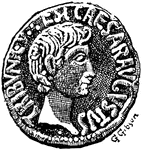
Dupondius, Obverse
The obverse side of the dupondius, "a Roman bronze coin, of the value of 2 asses." -Whitney, 1911
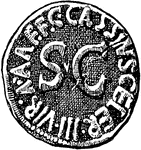
Dupondius, Revers
The reverse side of the dupondius, "a Roman bronze coin, of the value of 2 asses." -Whitney, 1911
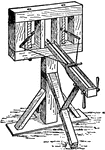
Catapult
A catapult is any one of a number of non-handheld mechanical devices used to throw a projectile a great…
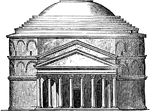
Façade of the Pantheon at Rome
"The most important and most beautiful of circular buildings without columns surrounding it is the Pantheon…
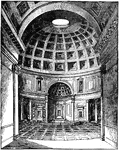
Interior of the Pantheon at Rome
"The most important and most beautiful of circular buildings without columns surrounding it is the Pantheon…
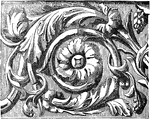
Ancient Roman Frieze
"Fragment of an Ancient Roman Frieze. The ornamentation had to correspond with the massive character…

Cup
An illustration of a cup designed by Euphronios, an ancient Greek vase painter and potter, active in…

Temple of Theseus
The Temple of Hephaestus and Athena Ergane, also known as the Hephaisteion or Theseion, is the best…
Tower of Santa Maria in Cosmedin
"Tower of the Early Christian Basilica of S. Maria in Cosmedin at Rome." Santa Maria in Cosmedin (or…
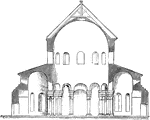
Santa Costanza
"Section of the Church of S. Constantia at Rome. The simplest desctiptions of this kind of building…

Gulf of Santorin
Bird's eye view of the Gulf of Santorin, during the volcanic eruption of February 1866.

Emplectum
"That kind of masonry, much used in ancient fortification-walls, etc. in which the outside surfaces…
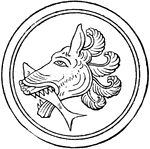
Episemon
Episema were used in Greece as a symbol for a country, region, or used on a shield or badge. This episemon…

Club Moss
Lycopodiopsida is a class of plants often loosely grouped as the fern allies, and includes the clubmosses.…
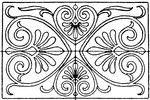
Greek Oblong Panel
The Greek oblong panel has a strict palmette decoration. It is found in the painted coffers (sunken…
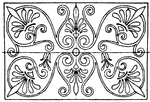
Greek Oblong Panel
The Greek oblong panel has a strict palmette decoration. It is found in the painted coffers (sunken…

Egyptian Amphora Shape
This Egyptian amphora is a vase with a cover intended for water, oil or wine. It was found in Thebes,…

Egyptian Amphora
This Egyptian amphora is a vase with a cover intended for water, oil or wine. It was found in Thebes,…

Roman Amphora
This Roman Amphora is an unpainted vase made out of yellow clay. It was found in the area near Aquileia,…
Roman Amphora
This Roman Amphora is made out of iridescent glass and was found in Pompeii, Ancient Rome.

Egyptian Krater from Thebes
This Egyptian Krater is an antique vase that was found in Thebes, Ancient Egypt during the eighteenth…
Egyptian Bucket from Thebes
This Egyptian bucket was found in Thebes, Ancient Egypt during the reign of Tutmose III. An Egyptian…
Exedra at the Street of Tombs in Assos
An exedra is a semicircular recess set into a building's facade. The exedra at the Street of Tombs in…
Dakota Artesian System
East-west section across South Dakota to show the Dakota artesian system. The Dakota sandstone is composed…

Feloher from Nineveh
"One of an order of beings, the life-principles or geniuses or tutelary spirits of living beings, believed…

Eolian Cross-bedding
Eolian type of cross-bedding in ancient limestones, formed of uniform lime-sand grains south of St.…

Eolian Cross-bedding
Eolian type of cross-bedding in ancient limestones, formed of uniform lime-sand grains south of St.…

Quartz Grains
Well-rounded quartz grains from ancient eolian rock, enlarged by secondary addition of silica in optical…
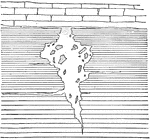
Fissure in Limestone
Diagram of an ancient fissure in fine Upper Silurian limestone, etc., filled with rounded grains of…

Limestone Fragment
Fragment of the wall rock (limestone) included in an ancient sandstone dike; the rock is shattered and…
Niagara Escarpment
The edge of the Niagara escarpment. NS, showing the position of the ancient Iroquois Beach (IB) and…
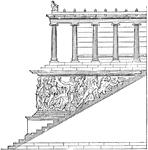
Frieze of Altar at Pergamon
The stairway of the great altar at Pergamon in Ancient Greece shows a frieze. A frieze is a sculpture…

Assyrian Fringe
"Assyrian Fringes, from ancient bas-reliefs. Fringe: an ornamental bordering formed of short lengths…

Assyrian Fringe
"Assyrian Fringes, from ancient bas-reliefs. Fringe: an ornamental bordering formed of short lengths…
